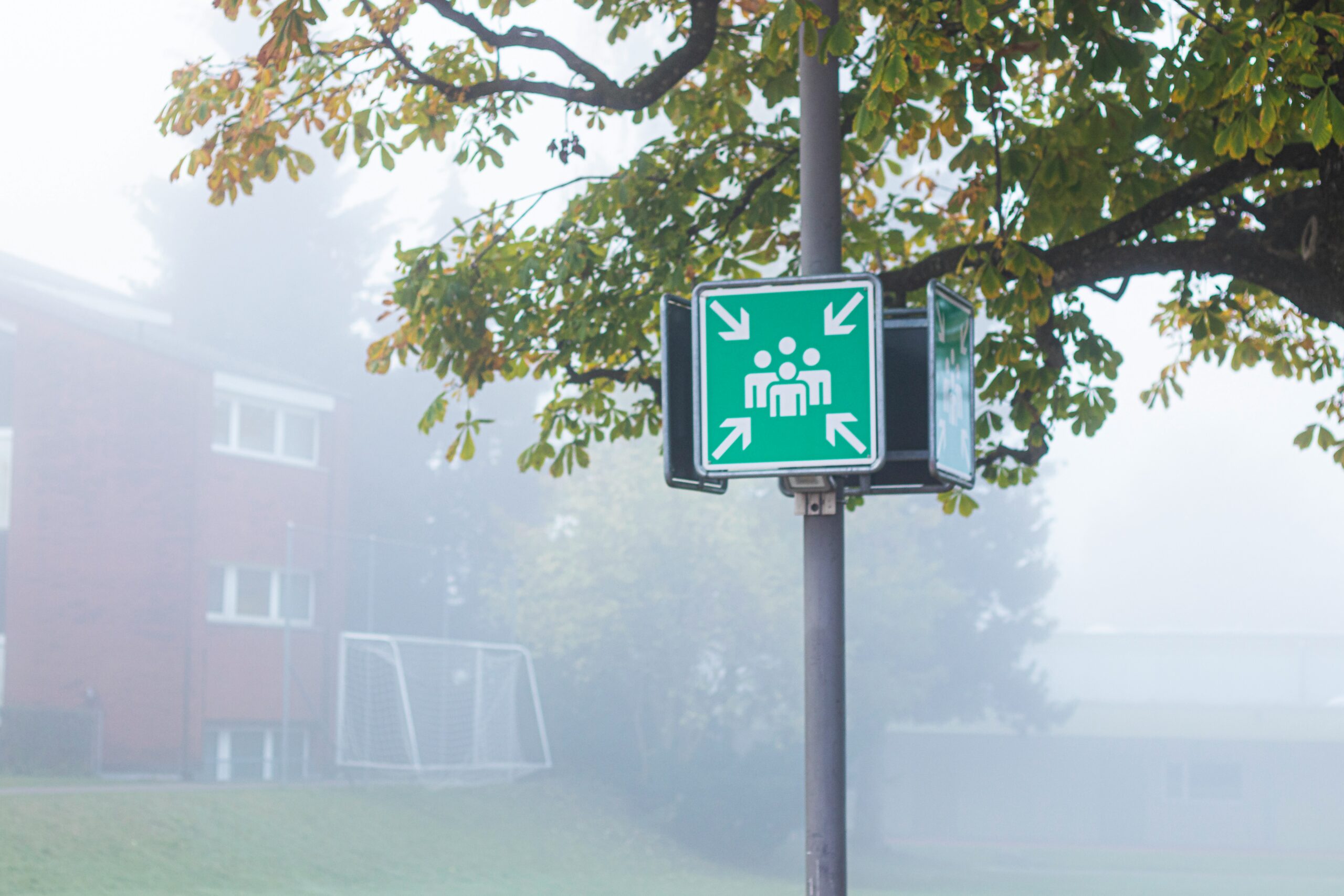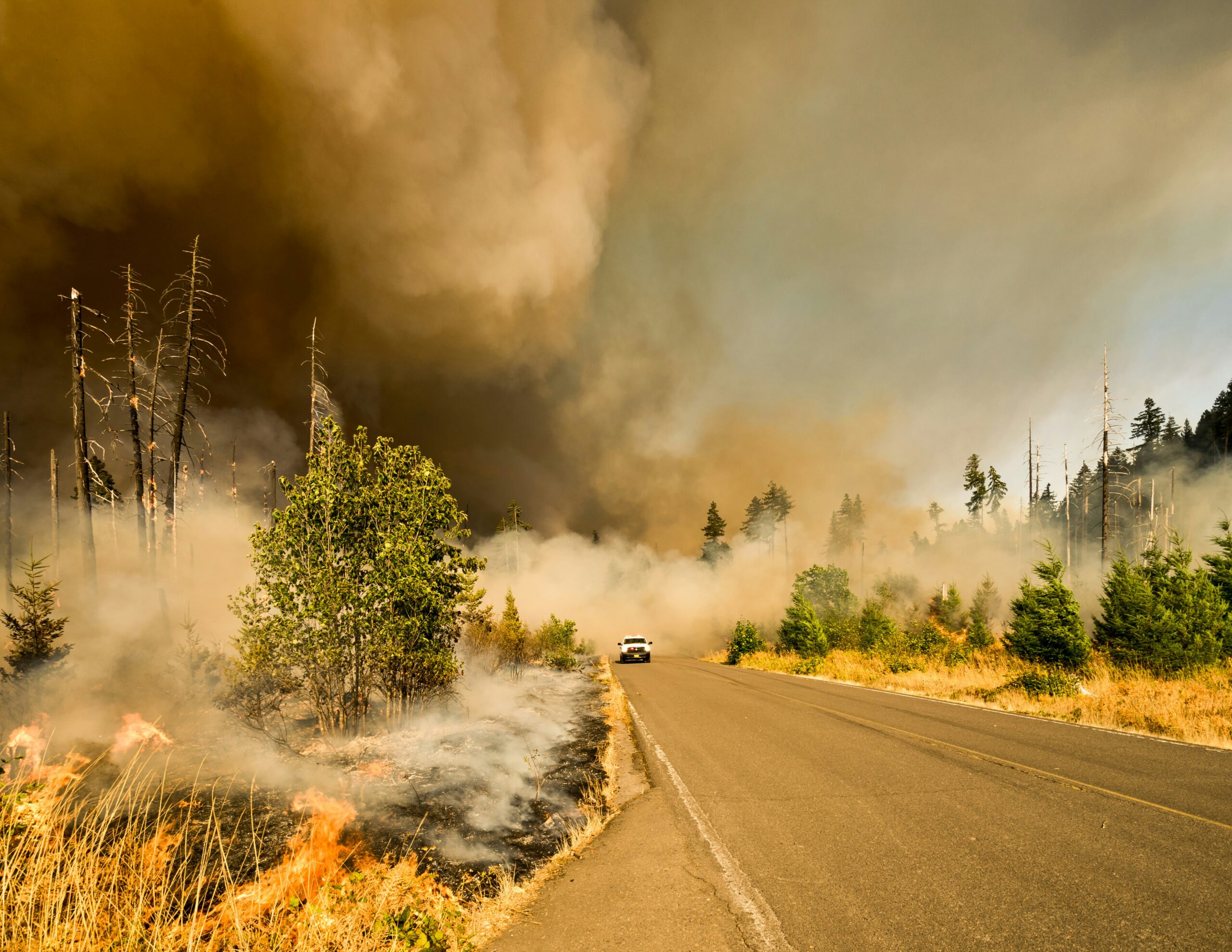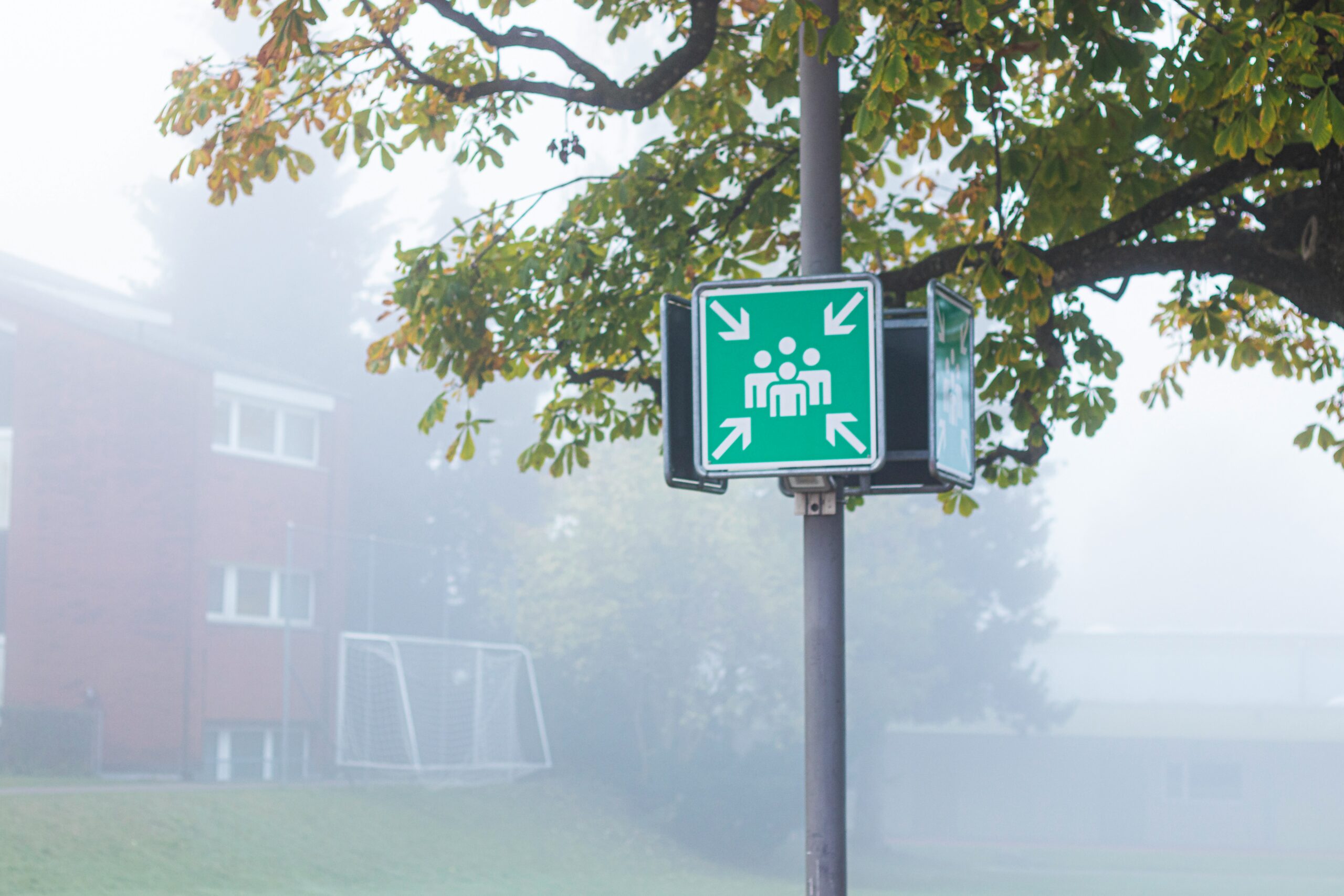Overview of the Hughes Fire
The Hughes Fire, which ignited on August 31, 2023, near Castaic, California, has become a significant event in the region’s recent history. The origins of the fire are believed to be linked to extreme weather conditions, characterized by high temperatures and strong winds that facilitated its rapid spread. Initially reported on the outskirts of Castaic, the fire quickly expanded due to the presence of dry vegetation, which acted as fuel, allowing the flames to engulf nearby areas swiftly.
As the Hughes Fire advanced, it posed a serious threat to both residential and commercial properties in Castaic and the surrounding Santa Clarita Valley. Local authorities quickly initiated an evacuation order for specific zones, prioritizing the safety of residents. Evacuations have been critical in mitigating risks and ensuring that emergency services can operate effectively without the presence of civilians in high-risk areas. As firefighting crews mobilized, they worked tirelessly to establish containment efforts aimed at curtailing the fire’s spread toward more populated regions.
By early September, the fire had reached approximately 3,500 acres, prompting a multi-agency response involving local, state, and federal resources. Progress reports indicated that containment was steadily improving, allowing evacuation orders to be lifted in stages, although some regions remained under watch due to persistent dangers. The Hughes Fire has also raised concerns about the long-term environmental impact on the local ecosystem, as damage to wildlife habitats and air quality degradation due to smoke have become significant issues facing the community in the aftermath.
In the wake of this incident, discussions around fire preparedness and ecological management have intensified, highlighting the importance of community resilience and the need for ongoing vigilance against wildfires in this fire-prone region of California.
Location and Areas Affected
The Hughes Fire has significantly impacted various regions in and around Castaic, California. This wildfire started in proximity to Castaic Lake, a well-known recreational area that attracts visitors for boating, fishing, and hiking. The geographical location of Castaic Lake lies within the northern part of Los Angeles County, making it a central hub for outdoor enthusiasts. The fire’s encroachment on such a vital locale has raised concerns regarding both environmental damage and public safety.
In addition to Castaic Lake, several nearby neighborhoods have been affected, including the residential areas of Hasley Canyon and Valencia. The proximity of these neighborhoods to the wildfire has prompted mandatory evacuation orders to ensure the safety of residents. Many families were forced to leave their homes at a moment’s notice, further complicating the situation for emergency responders trying to contain the blaze. The evacuation zones were established based on real-time assessments of wind direction and fire activity, and as the situation evolves, these zones may be adjusted accordingly.
The fire has also impacted various landmarks within Santa Clarita. Local businesses, schools, and parks have faced closures and interruptions due to safety concerns. Maps have been circulated to help residents understand the specific evacuation areas and the routes available for safe passage. Community resources have been mobilized to assist those affected, with local shelters set up to accommodate evacuees. In summary, the Hughes Fire has not only endangered the natural landscapes of Castaic but also significantly impacted the livelihoods of those residing in the nearby areas, necessitating a comprehensive response from city officials and emergency services.
Evacuation Alerts and Zones
In response to the ongoing Hughes Fire in Castaic, California, local authorities have issued a series of evacuation alerts designed to ensure the safety of residents. Understanding these evacuation zones is crucial for anyone living in the impacted areas. The evacuation zones are categorized into mandatory and advisory, allowing residents to assess their risk levels and take appropriate actions.
Mandatory evacuation zones are identified areas where fire activity poses a significant threat to lives and property. Residents in these zones are required to leave immediately to ensure their safety and that of emergency responders. The areas currently designated for mandatory evacuation surround the fire perimeter, with authorities emphasizing the immediacy of the threat. For instance, zones that have seen active fire behavior or those that are forecasted to be impacted by wind shifts are prioritized for mandatory evacuations.
Conversely, advisory evacuation zones serve as a warning mechanism for residents to be prepared for potential evacuations. These alerts indicate that while there may not be an immediate threat, conditions could change rapidly. In these zones, residents are encouraged to pack essential items, prepare their homes for potential evacuation, and stay informed through local news and official channels. Understanding which zone your residence falls into is paramount for making informed decisions.
To assist residents in identifying their specific evacuation zones, local authorities have made various resources available, including detailed maps and online tools. These maps will clearly demarcate which areas are under mandatory evacuation orders and which are under advisory status. Residents are advised to regularly check official websites or sign up for local alerts, ensuring they receive the most recent updates regarding evacuation protocols and safety measures. Familiarity with these resources can significantly aid in navigating these challenging circumstances and ensuring personal safety.
Emergency Resources and Support
In the wake of the Hughes Fire, it is essential for residents and affected individuals in Castaic, California, to access critical emergency resources and support systems. Local authorities have established shelters to provide immediate refuge for those displaced by the fire. The Castaic Community Center has been designated as an official evacuation shelter, equipped to accommodate families and individuals needing a safe space. Additional facilities may open as the situation evolves, so staying informed through local news outlets is key to finding nearest available shelters.
Moreover, several local organizations are actively offering assistance to those impacted by the wildfire. The Red Cross is coordinating relief efforts, providing necessities such as food, clothing, and medical assistance. Community volunteers also play a pivotal role in these efforts, and coordination can be facilitated through local forums and social media groups dedicated to wildfire recovery in the Castaic area. Residents are encouraged to contribute or seek help through these established channels to ensure a comprehensive support network.
To keep abreast of developments regarding the Hughes Fire, community members should rely on official sources for the most accurate and timely information. The Castaic Fire Department and Los Angeles County Emergency Management Agency provide regular updates through their websites and social media platforms. Residents can also sign up for text alerts by contacting their local emergency services for fire-related notifications, ensuring they receive real-time information regarding evacuation orders, road closures, and safety recommendations.
It is vital for all residents to familiarize themselves with these resources and remain engaged with their community. By leveraging available support systems, individuals can navigate this challenging time with greater resilience and ensure their safety in the aftermath of the Hughes Fire.
Fire Safety Tips for Residents
As the threat of wildfires becomes increasingly prevalent, it is crucial for residents of Castaic and surrounding areas to prioritize fire safety. Implementing effective strategies not only enhances personal safety but also protects property from potential fire damage. To begin, creating a comprehensive fire safety plan is essential. This plan should include an escape route that leads to a safe meeting point outside the danger zone. Additionally, it is advisable to practice drills with all family members, ensuring everyone knows their responsibilities and actions during an evacuation.
Another critical component of fire safety is the preparation of an emergency kit. This kit should contain essential items such as first aid supplies, bottled water, non-perishable snacks, flashlights, batteries, and important documents. Such an emergency kit assures that one’s basic needs are met during unforeseen evacuations. Furthermore, keeping a list of local emergency contacts is beneficial for quick reference during a crisis.
Protecting your property is also a vital aspect of fire safety. Clear defensible space around your home by removing flammable materials such as dead vegetation, firewood, and patio furniture. Trim trees and shrubs to create a buffer zone, and consider using fire-resistant landscaping options to reduce the risk of fire spread. Moreover, it is crucial to ensure that gutters and roofs are clean from debris, as accumulated materials can easily catch fire and pose a serious threat.
Finally, staying informed about fire weather conditions through local news and official alerts can greatly enhance a resident’s ability to respond promptly. By taking these fire safety precautions seriously, residents of Castaic can better protect themselves and their properties from the potential devastation of wildfires.
Live Updates on the Hughes Fire
The Hughes Fire, which has impacted the Castaic area of California, has become a major concern for residents and local authorities. To stay informed about the evolving situation, it is crucial for individuals to access real-time updates from reliable sources. Various official channels and news outlets have dedicated resources providing live information on the fire’s behavior, containment strategies, and overall impact on the community.
For the most current updates on the Hughes Fire, the Los Angeles County Fire Department (LACoFD) maintains a robust digital presence. Their official website and social media accounts offer timely information regarding fire containment efforts and safety advisories. Citizens are encouraged to follow @LACoFD on platforms like Twitter for immediate alerts. The LACoFD also posts regular updates detailing operational activities and resources deployed to combat the fire.
In addition to LACoFD, other reputable local news organizations such as the Los Angeles Times and NBC Los Angeles provide ongoing coverage of the Hughes Fire. These news outlets not only report on the fire’s progression but also publish articles outlining the potential impacts on nearby communities, road closures, and evacuation orders. Accessing these platforms will equip residents with the information necessary to make informed decisions regarding their safety and that of their loved ones.
Furthermore, the official Castaic community website features updates specifically tailored for local residents. This platform serves as an important resource for understanding community responses, emergency services, and ways to get involved in assistance efforts. Engaging with these channels ensures that individuals are apprised of the latest developments concerning the Hughes Fire and can effectively prepare for any required action.
Impact on Local Schools and Community
The Hughes Fire significantly affected Castaic’s local schools, primarily leading to closures that disrupted the education of many students. Notably, Castaic High School had to shut its doors temporarily due to the proximity of the fire, making it impossible to ensure the safety of students and faculty. This closure, while necessary, left many parents anxious about the educational continuity during a time of crisis. The authorities prioritized safety, aligning with wider evacuation protocols as the wildfire spread, leading to uncertainty around timelines for the reopening of these critical educational institutions.
In addition to school closures, local community services also faced challenges. The urgent need for evacuation had a ripple effect on youth programs and after-school activities, depriving students of essential socialization and educational enrichment opportunities. Once the situation became dire, local officials facilitated alternative venues for relief efforts, with some community centers transforming into evacuation shelters. This shift underscored the community’s resilience while showcasing a united response in the face of adversity.
Parents and residents displayed commendable solidarity, often stepping up to assist displaced families while supporting the evacuation efforts. Local businesses and volunteers organized donation drives to provide essentials for those affected. Such community responses highlighted not just the immediate impact of the Hughes Fire but also a longer-lasting strain on daily life, routines, and the functioning of educational facilities. Fire-related stressors added to the challenges faced by families, educators, and students alike, affecting mental well-being and learning environments, vital components for growth and development.
Through these distressing times, the local community’s engagement illustrated the importance of collaboration and support systems in overcoming such crises, showcasing the collective strength of the residents of Castaic. The impact of the Hughes Fire on local schools and community services will undoubtedly linger, affecting future educational strategies and community planning in the region.
Historical Context of Fires in the Area
Castaic, California, and the greater Santa Clarita Valley have historically experienced various wildfires, driven by both natural and human factors. The region’s Mediterranean climate, characterized by hot, dry summers and periodic rainfall, creates a conducive environment for wildfires. Over the past couple of decades, there have been significant fire incidents, notably the 2005 Lakeview Fire and the 2016 Sand Fire, which devastated large swaths of land, compelling local authorities to strengthen their fire management strategies.
These previous fires have showcased a discernible pattern that tends to recur in this region. Seasonal winds, particularly the Santa Ana winds, exacerbate wildfire conditions and can propel flames rapidly, complicating firefighting efforts. The 2016 Sand Fire, for instance, spread across approximately 38,000 acres and resulted in extensive property damage and evacuation orders. As fire occurrences rose, the Castaic community witnessed the necessity for more robust fire prevention and response mechanisms, leading to the establishment of early warning systems, community workshops, and controlled burns as preventative measures.
Furthermore, these past incidents have provided valuable insights into the importance of rapid and effective communication during emergencies. The interplay between urban development and natural habitats has also been scrutinized, as expanding communities have increasingly encroached upon wildland areas. Lessons learned from previous fire incidents underscore the critical need for continuous education regarding fire safety, the maintenance of defensible space around properties, and the implementation of strict land use policies.
The recurrent nature of wildfires in Castaic serves as a reminder of the persistent threat that these natural disasters pose, making it imperative for residents and local government to remain vigilant. This understanding of historical fire patterns contributes to more informed responses to current fires, including the recent Hughes Fire, ensuring that lessons from the past are utilized to mitigate future risks.
Future Outlook and Recovery Plans
The aftermath of the Hughes Fire in Castaic, California, brings with it a range of challenges and considerations as communities begin to strategize recovery efforts. Local authorities and firefighting teams are currently assessing the damage caused by the fire, with immediate focus directed towards containing any remaining hotspots in affected regions. As persistence in ongoing firefighting efforts continues, decisions regarding resource allocation will be vital in ensuring a thorough and efficient containment process. Weather conditions in the coming weeks will play a significant role in shaping these efforts, as sunny, dry days may hinder recovery, while potential rain could benefit reforestation and help stabilize the soil.
Returning residents face the arduous task of navigating the rebuilding process. Local government and community organizations are initiating plans to assist those displaced by the Hughes Fire. These plans may include financial support for affected families and the development of temporary housing solutions. Furthermore, collaborations with non-profit organizations can pave the way for resource distribution, encompassing everything from food to supplies essential for those in dire situations. It is imperative that during this period, resources are equitably distributed to ensure that no segment of the community is overlooked.
Moreover, discussions around long-term recovery plans are underway, focusing on rebuilding infrastructure and improving forest management as a proactive measure to mitigate future fire risks. Implementing controlled burns and strategizing the removal of excessive vegetation will be essential in fostering a safer environment. Community engagement is crucial, and local stakeholders are encouraged to participate in dialogues centered on future resilience. The collective participation of Castaic residents in these recovery efforts will be instrumental in not only restoring their lives but also ensuring that the community emerges stronger and better prepared for any future challenges.



